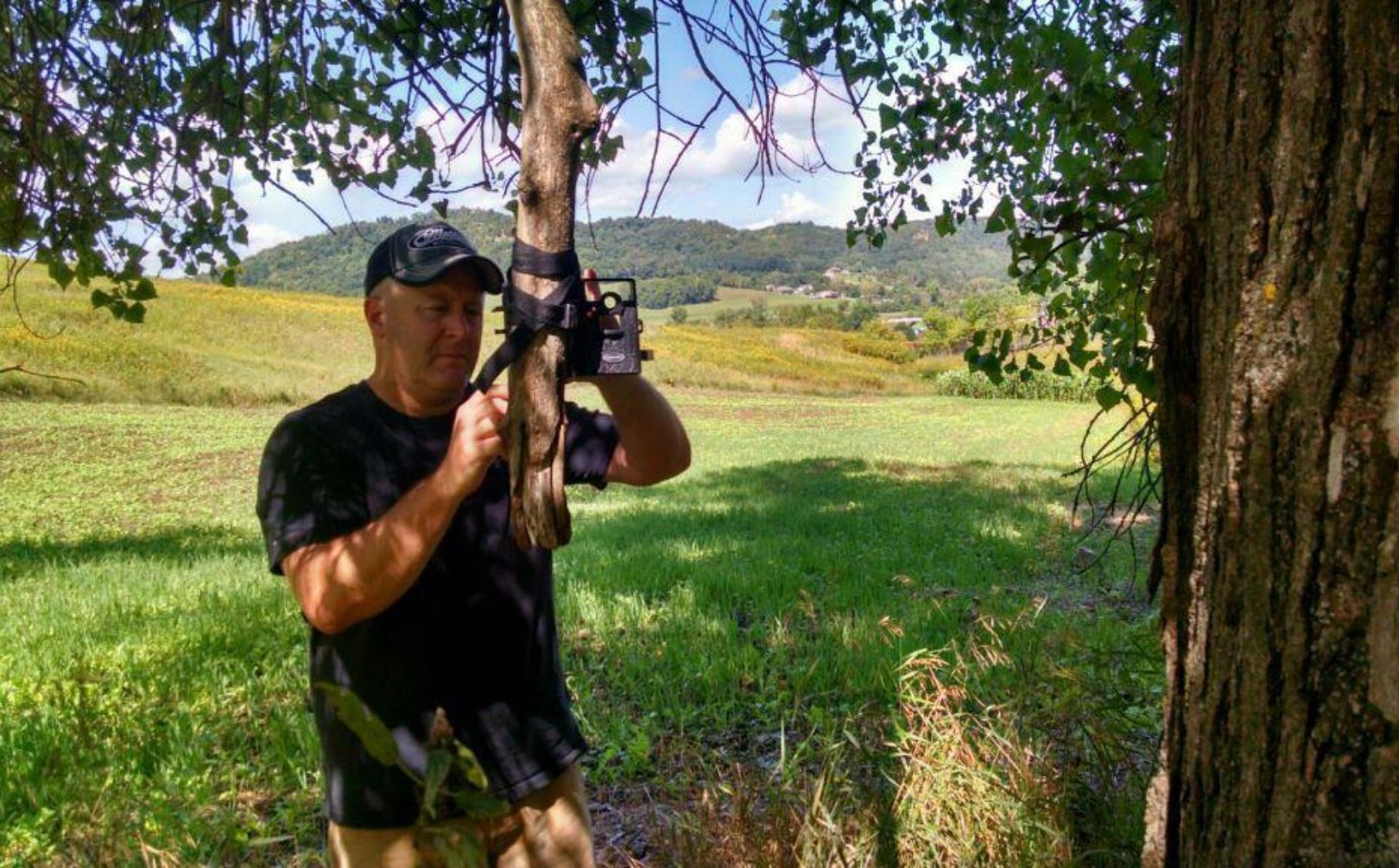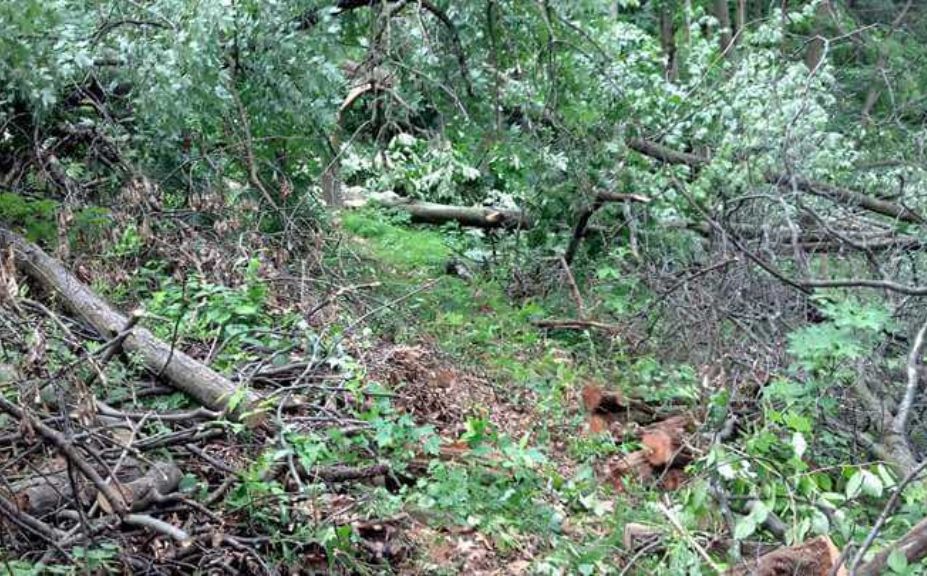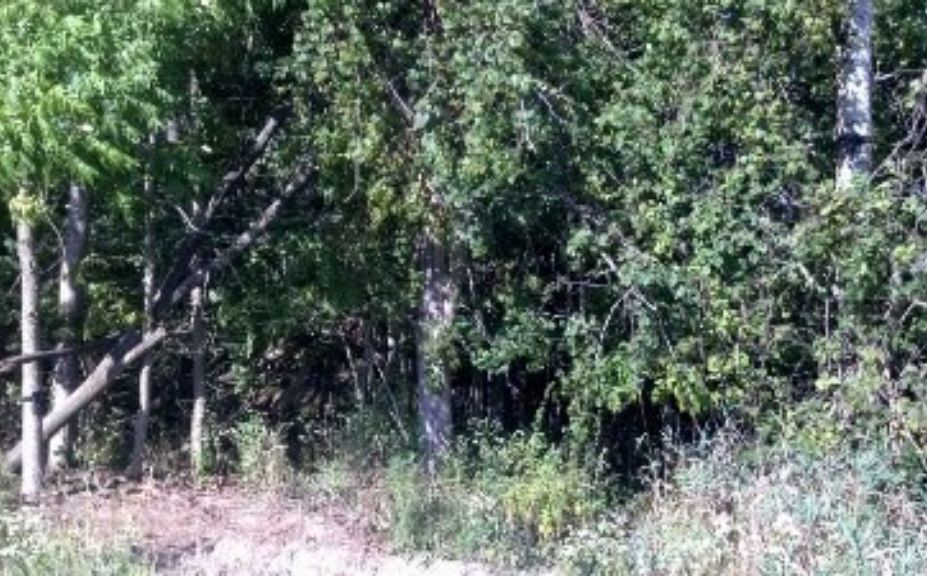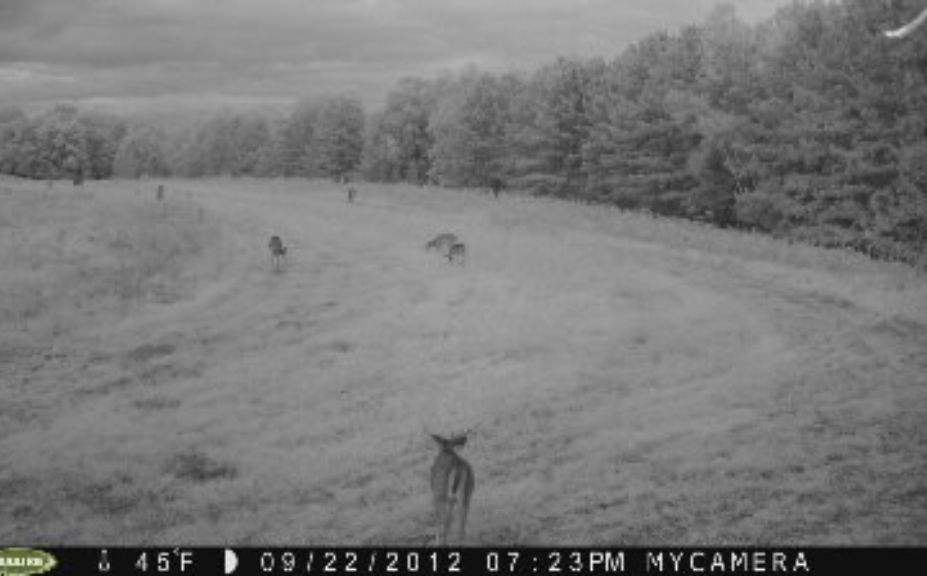
*There is no observational tool more important than a game camera. In my article titled,"5 Game Camera Clues for Whitetails".I talked about several clues that a game camera can reveal to you outside of, "WOW, that's a giant buck!". But for all of the good that cams can do for you, they can also hurt your efforts if proper steps aren't taken to insure that a mature buck isn't patterning you, more than you can pattern him.
Have you ever experienced drastically decreasing deer pictures in a location? I have, and although habitats, food sources and deer patterns change all of the time, I typically find that the #1 factor of change is because of our intrusions. Thinking back to the 35mm film days of 12-14 years ago I remember a well-worn trail that appeared as deer began to skirt my camera by another 20 yards. They still continued their movement to a major food source, but not on the same trail that I flashed them in the face with a stinky film camera on. In 2011 we had a camera set-up on an oustanding waterhole movement and enjoyed a steady diet of great buck pics, does, fawns and other wildlife. That all changed when on October 22nd a giant buck was arrowed out of the stand that watched that same waterhole. Dozens of pictures each day turned into none, then a random few, and the # of pictures never again recovered before the WI Rifle season opener. Follow along as I discuss..
8 critical deer cam location strategies for whitetails:
1. Easy in-Easy out
Is your cam even located in a good spot? Not that it doesn't matter, but a non-invasive camera locations trumps all other locations, even if another location would have been the best spot in the woods. Many of my own personal cams can be accessed during the middle of the day, just about any time of the year. Depending on the lay of the land, it may even be possible to actually drive to your cam location, with deer bedded enough below or above of your access that they couldn't possibly know that you are changing a card. My goal is to discover mature buck movements, and that doesn't mean it has to be in their bedding areas during the middle of the day.
My favorite in-season way to change an SD card is to check the camera after the hunt, near my stand...and get out. I typically only hunt my stands a few times a season at best, but often a cam is on the way to a stand or the way out, and can be changed at that time too. In that way I have an easy access, and by changing the card at the same time as my hunting access I am adding no additional scent or disturbance to the area. Just don't forget to bring a card with you. Too many times we hunt a remote stand, forget a card...and then can't resist the temptation to pull the card without a replacement. Woops! We think we will be back in several days or a week and then the camera sits empty for 3 weeks.

*Getting in and out of a bedding area location for game cam placement is much like the skills needed for hunting a bedding area. To find out more about those skills, try reading "How To Hunt a Deer Bedding Area".
2. Out of Site, Out of Mind-from bedding areas
Although some of your best cameras may be located near a bedding area, the distance from that bedding areas is less important than if you can get into the location without spooking deer within the bedding. How close should a camera be to a bedding area? Let the lay of the land, habitat, and topography reveal a safe distance. A camera located around the point from a hidden bedding area can be a good spot because there may be solid soil and rock between you and any bedded deer. But in general, if you can get into a camera without spooking deer within a nearby bedding area, it can be a great spot!
3. Night-time Captures
The camera hidden and picture above was perfect for capturning some trespassing neighbors we wanted to keep an eye on, but it was also a great spot to find a midnight cruiser as he exited or entered our land! Long benches swept to either side, connecting remote bedding areas 200-300 yards in either direction. Sounds like a great spot for a treestand doesn't it? Well it wasn't. That camera could almost be seen from the road, which included our parking area to hunt from. Not to say there was never any daytime movement, but it was an outstanding midnight cruising area for giants. Just because it is located within an area you wouldn't find suitable for hunting, doesn't mean that it isn't the best spot on your property to give you an idea of when, and which mature bucks are using your land. As you can imagine, a great night-time camera location is also a pretty easy daytime spot to change an SD card!
4. Day-time Food Source Survey
Along the same theme as keeping away from bedding areas and using an easy-access location, accessing cameras through an open ag field, deer-less set aside land, or large food plot during the middle of the day can be a great practice. Not only can you find out how many deer, and which bucks are using your food sources within their evening movements, but you can quickly check a card during lunchtime to determine which stand would be the best to sit in. If you stay away from the bedding areas that support the food source, this can be a great way to determine exactly which stand to use. In 2010 I came out for a great archery opening weekend to hunt an early season cold front. Out of roughly 6 Northwest evening wind stands, I chose 1 of our historically best food-source movement areas for the perfect conditions. After a doe-filled hunt with a few small bucks, I grabbed the SD card and left the woods. What did I find on the card? 5 weeks of pics, over 4000 pictures and absolutely zero mature bucks. I was just being lazy, but if I would taken the hour walk to grab the card in the afternoon, I would have sat in another stand.
Easy access food source cams can be your ticket to a pretty defined hunt, especially if you have the ability to check the cam prior to the hunt!
5. Big Movement Habitat Funnels
Mature bucks cruise great distances during the rut. Whether they move under the cover of darkness or during the middle of the day, leaving a cam on an important cruising fencerow, the outside edge of a large swamp or a slight valley connection between woodlots can give you another low-impact strategy to reveal the patterns of the mature bucks in your area. When a buck shows up in the middle of your land on a food source, it maybe tough to figure out exactly which direction he entered your land from. However, if you place a cam in a great funnel that connects your land to a distant bedding area you may just find where to set-up as that buck enters your land just before dark...or as he is exiting very early in the morning. Ditches, fencerows, valleys and rivers are all great big movement funnels to deliver deer to your land, and to watch with a deer cam!
Large habitat movement connections on your own land can work great too! Watching the side of a several hundred yard narrow food plot or chainsaw corridor is an outstanding practice too. By placing the cam on the exterior elbow of the movement and away from interior bedding areas, you will also create a non-invasive access for you to replace an SD card too!
6. Remote Stand Black-Ops
I prefer black-out cams regardless of the location, but if you are going to hang a remote cam near a hard to access stand location, going black-ops is the way to go! I have one in the woods right now that falls into this category, a Moultrie 1100 series. I have to climb nearly 500' in elevation to reach it, but it watches an outstanding bench that filters deer to numerous stand locations. It will be the least accessed game cam on the property, but it is an important one! Because it is adjecent to hard to access stand locations that I want to maintain daytime movement near, there is no flash and certainly no red IR bulbs. I have also left a brush pile in front of the cam so that a deer should never be able to scent where I handled or walked to the cam. Placing logs, brush or even treestand cuttings below and in front of a game cam is a great way to make sure that deer don't get too close to your scent and access route.
7. Picture Perfect Target Shots
Several years ago we enjoyed some great pictures by placing cams that were set to give us a snapshot of every buck that was using a waterhole, and many years ago I used the same practice for mineral stations. That gave us some outsanding pictures, consitently and often. However, WOW, our pictures have really improved since taking a slightly different approach. If the waterhole or mineral station is located next to a tree or stump-perfect! And if it isn't, add a fencepost to strap your cam too. Often the camera can be located within 5' or less from a hotspot of water, mineral or food, but your main target area should be past the hotspot, not the hotspot itself. Capturing a background cruising bench, scrape or rubline, or funnel will still give you pictures of every deer that visits the attraction, but even more importantly every buck that walks by in the background that is too shy to "come on in"! Some of your best pictures have been of bucks that were simply just walking by searching for doe-scent, and never actually visited the attraction itself.
8. Field Shots


*Can you find the cam? We have a "dummy cam" on the waterhole to set the bait for neighboring camera thieves, but the cam in the tree to the upper right has revealed some of the best mature buck behavior on the property while capturing buck pics up to 500 yards away. For strategies for reducing trespassing concerns before they can potentially even begin, try reading "Border Wars: Whitetail Trespass Strategies".
Do you have a waterhole or mineral station alongside a food plot or ag field? Instead of watching the plot through timed shots during the first or last hours of daylight, try taking a different approach. Place the cam in a position to watch deer from a great distance, after being tripped when a deer hits the attractant located right in front of the camera. This is a cam that is extremely easy to access, we can drive to it without spooking deer, and it is located within a critical deer movement area.
Conclusion
What has your main purpose been for using a game camera? For myself, there are many, many reasons as discussed in my 5 game camera clues mentioned above...and even more! I have even though that a guy using an effective game strategy has a huge advantage over a neighbor who does not, but that is another discussion. The point is, there are many ways to non-invasively use game cameras to tell you when, where, and from which direction the mature bucks in and around the land you hunt move. As long as great care is taken to keep the deer from patterning you more than you can pattern them you are on the right track, even if your camera location isn't in the best spot in the woods for deer movement!